Application programming interfaces, usually just referred to as APIs, are a very common attack vector when enterprises are breached. A poorly written and secured API endpoint can make an organization lose data and customer trust in the blink of an eye. As outlined in the OWASP API Security Top Ten, API attacks can have disastrous consequences for organizations and their customers. The risks present within APIs are why ensuring the security of an organization’s APIs is an important practice. Adhering to API security best practices and standards is a must for any organization exposing APIs internally and externally.
Luckily, there are numerous API security tools out there to help shoulder the burden of creating secure applications and APIs. Apart from the typical things such as cost, simplicity of integration, and ease of use, there are many other factors to consider when adopting new API security tools. Functionality should be at the top of the list and ensuring that the tool fits your exact needs within its features. When selecting an API tool it should be capable of performing one or more of the following tasks:
API security testing—The API tool must be capable of testing an API using the static application security testing (SAST) methodology, which involves testing the API source code for security flaws, or dynamic application security testing (DAST), simulating attacks to the API to check for security vulnerabilities.
API security posture—The tool should be able to create an inventory of APIs, the methods exposed and classifies the data used by each method. This analysis provides visibility into the security state of a collection of APIs.
API runtime security—The tool should provide real-time protection for APIs against potential security breaches and attacks.
In this article, we'll look at some of the most popular API security tools and how they can help you. Let’s jump into looking at the top 7 most popular tools in the list below.
ZAP
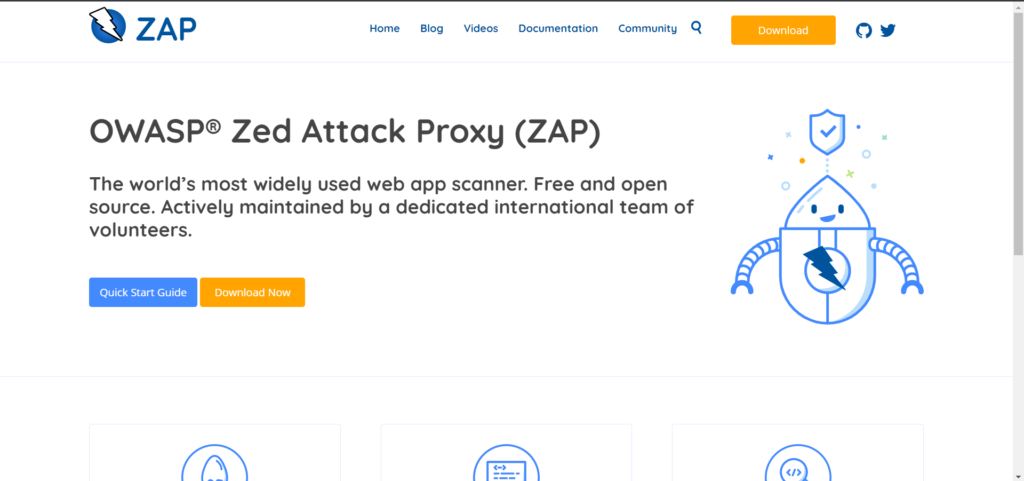
First on our list is ZAP. The Zed Attack Proxy, abbreviated to ZAP, is an open-source web security testing tool. The tool was developed by the Open Web Application Security Project (OWASP) and continuously maintained by the community to ensure it is up-to-date and effective against the latest threats.
ZAP's primary purpose is to provide penetration testing through automation. ZAP works by running simulated attacks against the API endpoint to check for exploitable vulnerabilities. By using this technique, ZAP lets developers know how their API will respond to an attack in real time. The result of these tests allows developers to implement security steps or refactor code to mitigate the discovered security defect.
ZAP is a cross-platform tool and can run on a variety of operating systems, including Mac OS, Windows, and Linux. The platform's primary language support is Java, but it also supports a variety of other languages such as JavaScript, JRuby, and other JSR 223 languages.
Advantages of ZAP
Free and open-source
Tests web applications and APIs against vulnerabilities outlined in the OWASP Top 10
Supports integration with various other platforms
Capable of generating test case reports
Disadvantages of ZAP
Could use more detailed test reporting functionality
Lacks automation support
StackHawk
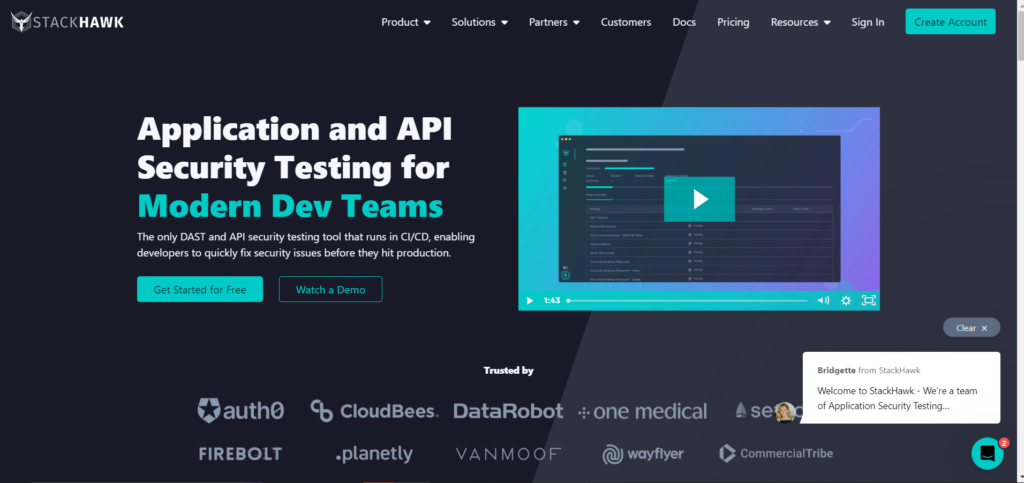
StackHawk is a modern API security testing tool founded in 2019. It's a dynamic application security testing (DAST) tool that scans APIs for potential vulnerabilities. StackHawk works by simulating an attack, which is based on common open-source vulnerabilities like OWASP top 10 or custom attack definitions, and observing how the API responds. In other words, it tries to leverage known vulnerabilities on the API to observe how it reacts to them to determine if the API is secure against the vulnerability or not.
Stackhawk provides seamless integration with your CI/CD so that you can automate the testing of every API endpoint in your application. By using StackHawk in your CI/CD pipeline, tests can be run on every commit to ensure developers are aware of any bugs in the codebase as soon as they are introduced.
Advantages of StackHawk
Stackhawk is completely free to use when working on open-source projects.
It integrates easily and provides extensive automation capabilities with your CI/CD, automating application testing quickly.
It offers test report analytics and dashboarding.
StackHawk is built on top of ZAP.
Developer-first. Easy to scale application security across teams.
Integrations with popular dev-tools.
Disadvantages of StackHawk
Lacks an on-prem solution required by some industries and organizations.
Wallarm
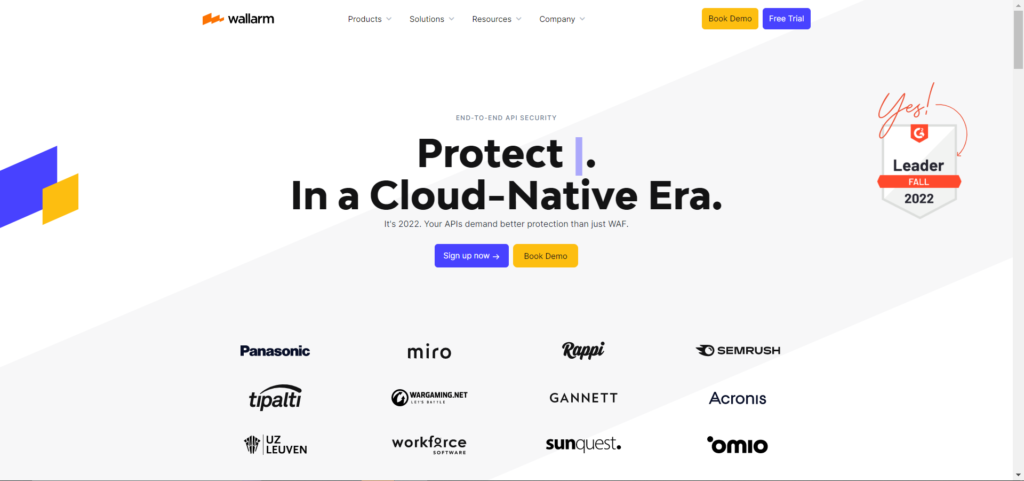
Wallarm is an all-in-one API security tool that provides API security posture reports, security testing, and runtime protection.
Founded in 2014, it protects an API against runtime attacks, provides dynamic application security testing, and provides continuous API service discovery to give you an overview of your API inventory.
Wallarm integrates with any CI/CD workflow, allowing you to run dynamic test cases automatically.
You don't need a lot of programming experience to utilize Wallarm. It's a no-code tool hosted as a managed SaaS platform so Operating System compatibility is not a concern.
Advantages of Wallarm
It provides seamless integration with other platforms.
It's a full-suite API security tool.
It provides analytics and dashboarding of test reports.
Disadvantages of Wallarm
Very costly to run since pricing runs quite high.
42 Crunch
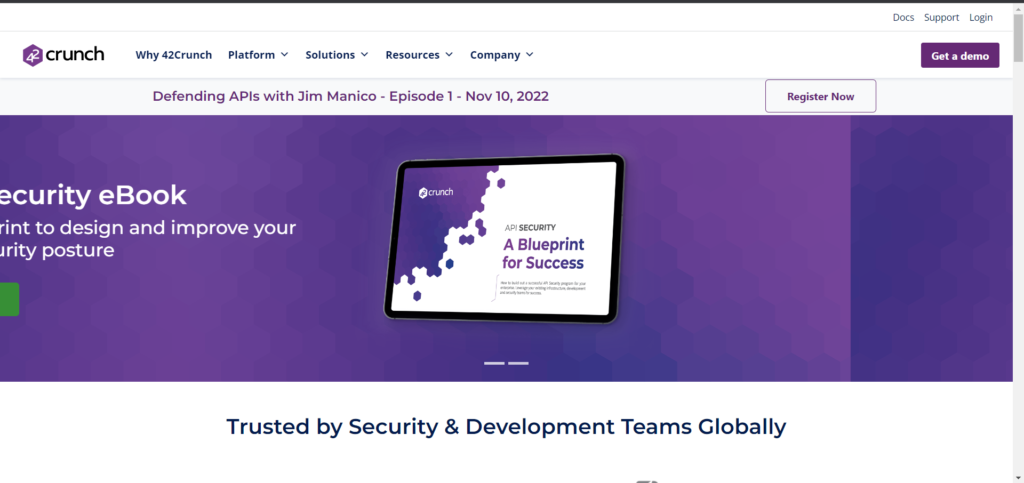
42 Crunch is a robust API security platform developed in 2016 to provide API security posture, automate API security testing in your CI/CD pipeline, and enforce security policies. 42 Crunch provides protection to APIs against threats in runtime through their firewall. The platform also provides auditing and discovery into your API inventory. From the API security testing standpoint, it provides static analysis testing for your APIs.
42 Crunch is a no-code SaaS platform, which means it's not dependent on any programming language and doesn't have any issues with OS compatibility.
42 Crunch also offers seamless interaction with many platforms, allowing you to automate security testing in your CI/CD workflow.
Advantages of 42 Crunch
It's a full-suite API security tool.
It provides integrations with your CI/CD workflow.
It provides analytics and dashboarding of test reports.
Disadvantages of 42 Crunch
Expensive, since your paying for a full suite of features, whether you use them or not.
It allows for fewer integrations with other platforms.
SALT Security
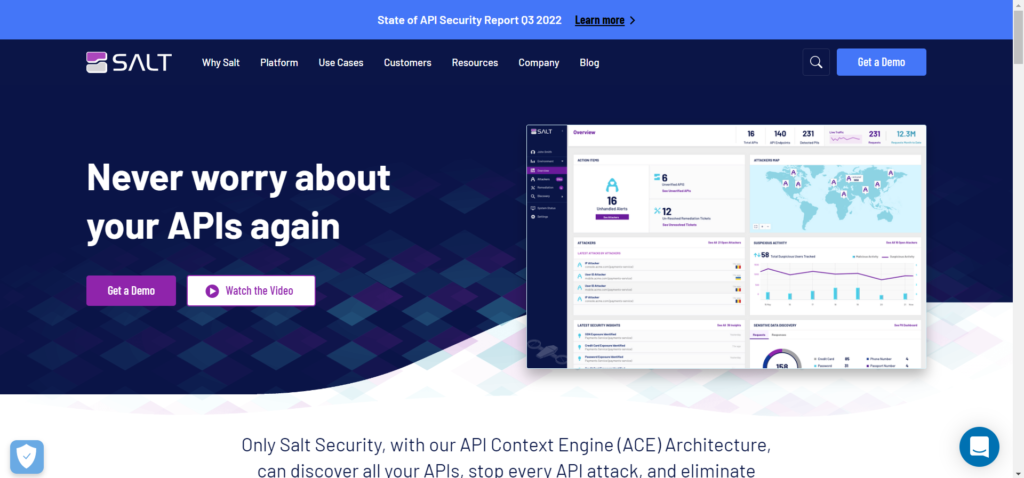
SALT is an API security platform founded in 2016 that provides continuous discovery and security posture management of all your APIs, including shadow and zombie APIs. This allows you to have the full context of your APIs and be aware of the data you're exposing. The platform allows you to scan and test your APIs for security vulnerabilities and protect APIs against runtime attacks.
SALT is a cross-platform software, meaning it can run on different types of operating systems and integrates seamlessly with your CI/CD workflow.
Advantages of SALT Security
It's a full-suite API security platform.
Provides integration with your CI/CD.
It provides analytics and dashboarding of test reports.
Disadvantages of SALT Security
Pricing is not transparent and not available on their website
No self-serve demo available
Postman
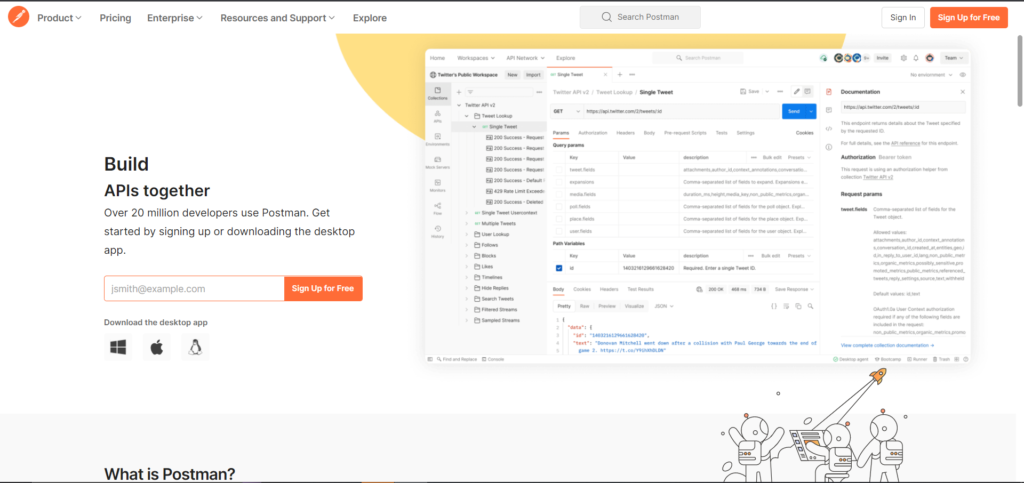
Postman is an API tool for creating and managing APIs. Within it’s suite of tools, Postman provides a testing solution that allows you to test your API for vulnerabilities. You can, for example, test your API to see if it has a broken authentication level or not.
It also has features that allow you to automate your security tests. With the potential to run your security tests within your CI/CD workflows.
Postman supports a variety of common languages and runs on Windows, MacOS, and Linux.
Advantages of Postman
great offering in the free tier, and paid tiers are still cost-effective.
It's cross-platform.
It provides analytics and reporting of tests.
It provides integration with different platforms.
Disadvantages of Postman
Integration possibilities are currently limited.
Imperva

Imperva is a cybersecurity software company founded in 2002 that offers an API security solution that includes API posture security and API runtime protection.
Imperva enables continuous deep discovery into your API inventory to eliminate data leakage and abuse. The platform allows users to be aware of what sensitive data they're exposing through their API endpoints, shadow APIs, and so on.
The company also uses a machine learning model to protect APIs in real-time against vulnerabilities in the OWASP top 10 and other new threats such as bad bot attacks, DDoS, credential stuffing, and so on.
Advantages of Imperva
It provides easy integration into your CI/CD.
Provides real-time API protection through machine learning models.
Disadvantages of Imperva
Has limited integration with other platforms.
Final Thoughts
In this post, we looked at some of the top API security tools for your organization. Generally, a single tool will not cover every aspect of security so the best strategy is to layer tools for complete coverage. Although many platforms exist, each has its own advantages and disadvantages which may or may not be applicable to your use case. One thing to keep in mind when selecting an API security tool is to be certain about what you want out of the tool. For instance, if all you need is an API testing tool, there's likely no need to invest in a full API security suite. Other factors to consider are affordability, language and OS support, ease of use, and available integrations.
Whether you're just beginning to think about API security tools or are upgrading your existing suite, StackHawk offers an easy and affordable solution to implement dynamic application security testing. Plug StackHawk directly into your CI/CD pipeline or run it locally and identify potential vulnerabilities in minutes. Easily access reports and discover potential fixes from within the platform and level up your API security with ease and automation. To get started, sign up for your free trial today!
Additional resources
Read on to see how StackHawk’s CSO, Scott Gerlach talks about “Shift Left” being more than just a buzzword here.
Check out why Omdia’s On the Radar report highlights StackHawk as an “interesting alternative to most other DAST tools” here.
Getting started with StackHawk? Check out Advice and Answers from the amazing StackHawk team here.



